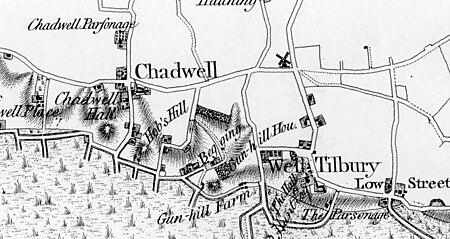Biggin, Essex
Essex geography stubsHamlets in EssexThurrockUse British English from February 2018

Biggin is a hamlet and manor in Chadwell St Mary, part of the borough of Thurrock, in the ceremonial county of Essex, England. It is about 2 miles (3.2 km) north of the town of Tilbury and a similar distance east of Grays. The name can be spelled Byggin, Bigging or Begging. In some sources it is called Little Biggin. From the 13th century until the dissolution, the manor was owned by the Cistercian Abbey of Stratford Langethorne. The manor was then granted to the Dean and Chapter of St Paul's Cathedral.For transport there is the A126 road, the A1089 road and the B149 road nearby. The nearest railway station is Tilbury Town railway station.
Excerpt from the Wikipedia article Biggin, Essex (License: CC BY-SA 3.0, Authors, Images).Biggin, Essex
Biggin Lane, Thurrock
Geographical coordinates (GPS) Address Nearby Places Show on map
Geographical coordinates (GPS)
| Latitude | Longitude |
|---|---|
| N 51.4747 ° | E 0.3747 ° |
Address
Biggin Lane
Biggin Lane
RM16 4LT Thurrock
England, United Kingdom
Open on Google Maps






